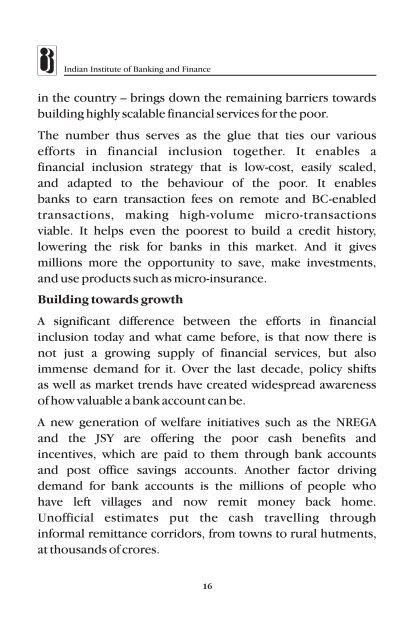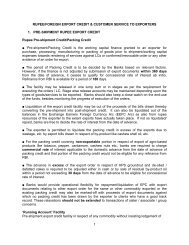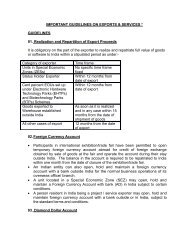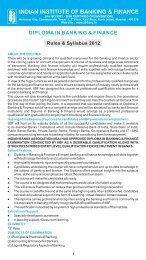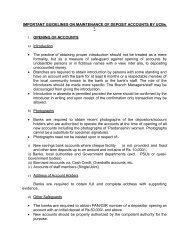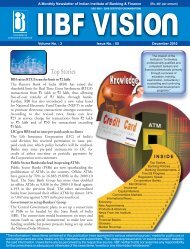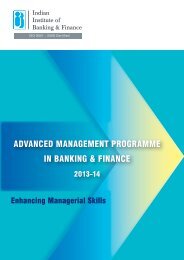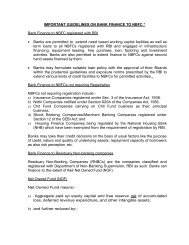Indian Institute of Banking and Finance 2
PTML Lecture Book - Cover - Indian Institute of Banking & Finance
PTML Lecture Book - Cover - Indian Institute of Banking & Finance
- No tags were found...
You also want an ePaper? Increase the reach of your titles
YUMPU automatically turns print PDFs into web optimized ePapers that Google loves.
<strong>Indian</strong> <strong>Institute</strong> <strong>of</strong> <strong>Banking</strong> <strong>and</strong> <strong>Finance</strong>in the country – brings down the remaining barriers towardsbuilding highly scalable financial services for the poor.The number thus serves as the glue that ties our variousefforts in financial inclusion together. It enables afinancial inclusion strategy that is low-cost, easily scaled,<strong>and</strong> adapted to the behaviour <strong>of</strong> the poor. It enablesbanks to earn transaction fees on remote <strong>and</strong> BC-enabledtransactions, making high-volume micro-transactionsviable. It helps even the poorest to build a credit history,lowering the risk for banks in this market. And it givesmillions more the opportunity to save, make investments,<strong>and</strong> use products such as micro-insurance.Building towards growthA significant difference between the efforts in financialinclusion today <strong>and</strong> what came before, is that now there isnot just a growing supply <strong>of</strong> financial services, but alsoimmense dem<strong>and</strong> for it. Over the last decade, policy shiftsas well as market trends have created widespread awareness<strong>of</strong> how valuable a bank account can be.A new generation <strong>of</strong> welfare initiatives such as the NREGA<strong>and</strong> the JSY are <strong>of</strong>fering the poor cash benefits <strong>and</strong>incentives, which are paid to them through bank accounts<strong>and</strong> post <strong>of</strong>fice savings accounts. Another factor drivingdem<strong>and</strong> for bank accounts is the millions <strong>of</strong> people whohave left villages <strong>and</strong> now remit money back home.Un<strong>of</strong>ficial estimates put the cash travelling throughinformal remittance corridors, from towns to rural hutments,at thous<strong>and</strong>s <strong>of</strong> crores.16


